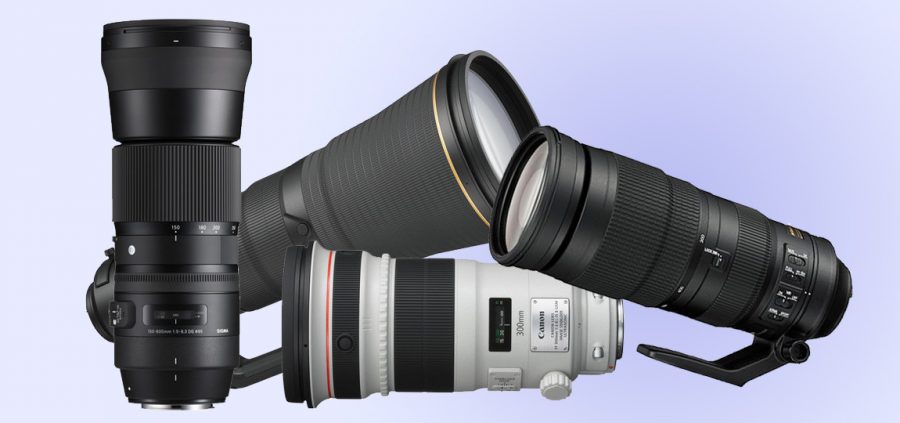Should You Use a Zoom or Prime Telephoto Lens?

When you’re looking at getting a telephoto lens, the first thing you’ll be considering (apart from the price) is whether to go for a zoom or prime. There are advantages and disadvantages to both options, but both have their place in the photographic arsenal. This guide will look at the strengths and weaknesses of each type to help you make an informed decision.
What is a Zoom Lens?
Zoom lenses have a range of focal lengths available to the user, making them increasingly popular amongst photographers. Some zooms have short ranges, but others can range from wide to telephoto. Usually the latter results in a significant lack in quality.


What is a Prime Lens?
A prime lens has only one focal length, meaning it can’t be adjusted at all. You may also hear them being referred to as fixed focal length lenses.
So, now that we’ve defined the lens types, let’s take a look at some of the advantages and disadvantages.
Zoom Lenses
The clear advantage to a telephoto lens is the ability to adjust the focal length by zooming in and out. This allows you to alter the composition of your photos and fine-tune the shot. If an animal comes closer than expected, all you need to do is zoom out to ensure you fit the subject into the frame properly. But if it’s further away, then zooming in will do the trick. It’s for this reason that I prefer zoom lenses, but they are also very useful when taking video footage as they allow you to take the same shot at different focal lengths (providing you with multiple shots that you can cut between during editing).
Having a zoom lens means you can carry around a range of focal lengths in just one lens. Instead of carrying three lenses with you, you could take just one. This saves space and weight in your camera bag, and can make things easier logistically speaking.
However, there are some clear disadvantages to a zoom lens. Firstly, they tend to take in less light. A fixed focal length lens may be f/2.8 at its maximum aperture, but a professional zoom will be around f/4 for a 200-400mm lens. With less light reaching the sensor you can find yourself at more of a disadvantage in low light conditions. A budget telephoto lens will be even worse in low light, and the maximum aperture can actually vary with focal length. Take, for example, the Sigma 150-600mm f/5-6.3 lens. It has a maximum aperture range of f/5-6.3, meaning that as the lens is zoomed in the widest possible aperture will decrease in size. At the 150mm end it will be f/5, and at the 600mm end it would be f/6.3.
There’s also an issue with sharpness. Zoom lenses tend to be less sharp than prime lenses, although professional zooms are still very sharp. This will vary from lens to lens of course, so it is important to do your research.
Some budget zoom telephotos, like the Sigma, physically extend when zooming in. I find this annoying because it can cause issues handling the lens. The best zooms do this movement internally, remaining the same size externally throughout the focal range.
Prime Lenses
Prime lenses are pretty much the opposite to telephotos. They don’t zoom in or out, which causes problems with composition. You can find yourself missing shots because of an animal coming too close, which can be infuriating especially if you cannot change your lens in time.
Prime telephotos tend to be extremely expensive, and there isn’t much on the market for cheap prime telephotos. However, you pay for what you get, and what you get tends to be very good. Primes are superior when it comes to the quality of the glass. Obviously there are variations from manufacturer to manufacturer in what you can expect (especially in the lower price ranges), but generally you can expect better quality from a prime. They are sharper and produce much crisper photos as a result.
The maximum aperture tends to be much wider than a zoom lens, with professional grade lenses reaching f/2.8 up to about 400mm. 500mm or 600mm professional primes tend to be f/4. This makes for a very fast lens respectively, and allows you to let in a lot of light.
Primes also tend to focus more quickly than zooms, but that is in part down to the motor in the camera body.
What About Shorter Focal Length Lenses?
I’ve looked at the pros and cons of telephoto lenses here, but the same principles tend to apply to the wider lenses. Sometimes zooms can cost more in the shorter focal length range than primes, but the same arguments tend to apply.
Which Should You Go For?
The choice between zoom and prime comes down to you and your needs. If you want maximum flexibility, then zooms are for you. But if having the best quality possible is most important to you, and you can sacrifice flexibility, then a prime may be your match.
For advice on specific lenses, have a read of our article “Choosing Your First Telephoto Lens“.






